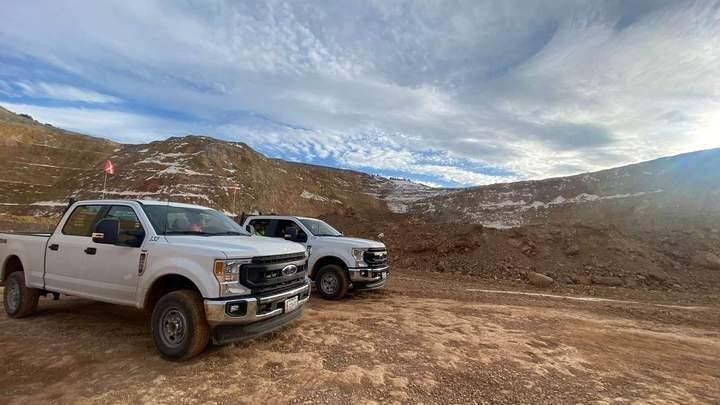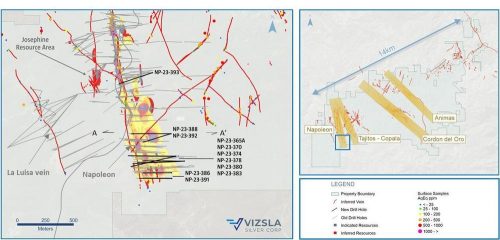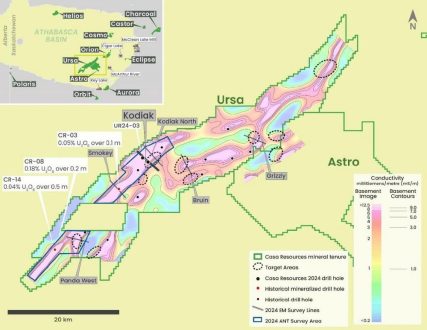
Where are the highest quality gold mines in the world?
How many grams of gold are in a ton of rock is one of the most important pieces of information. This is because the gold content plays a decisive role in determining the economic feasibility of a mine. If the ore is higher grade, then more gold can be produced at lower cost. If the ore grade is low, more material has to be processed, i.e., more money has to be spent. Most gold projects contain one to four grams of gold per ton of rock (low-grade mines). Grades of eight to ten grams are already referred to as high-grade mines. There are also gold mines that contain more than ten grams of gold per ton of rock; these are often small mines that are part of a larger complex.
One of the high-grade mines is the Island Gold Mine in Ontario. On average, 8.35 grams of gold per ton of rock can be found there. Also in Ontario is the Eagle River Gold Mine, which averaged 11.6 grams of gold per ton of rock in the first quarter of 2022, and the Macassa Mine in Ontario is equally high grade (16.64 grams of gold per ton of rock). The highest-grade commercial gold mine in the western world is the Fosterville Mine in Victoria, Australia. With more than 28 grams per ton of rock at a low mining cost of $309, this mine scores high. In the pre-Corona era, it was even over 40 grams of gold. These are all examples of producing mines.
Gold mines where drilling programs are underway, such as Calibre Mining – https://www.youtube.com/watch?v=6t0hT6NNKCg -, also often find excellent ore grades. For example, one of Calibre Mining’s deposits in Nicaragua, the Panteon project, recently produced grades of up to almost 35 grams of gold per ton of rock.
Tarachi Gold – https://www.youtube.com/watch?v=qwQHXVfmBy4 -, with projects in Mexico and in the Sierra Madre Gold Belt, has also already identified high gold grades in drilling, particularly at the Tarachi project.
Latest corporate information and press releases from Calibre Mining (– https://www.resource-capital.ch/en/companies/calibre-mining-corp/ -).
In accordance with §34 WpHG I would like to point out that partners, authors and employees may hold shares in the respective companies addressed and thus a possible conflict of interest exists. No guarantee for the translation into English. Only the German version of this news is valid.
Disclaimer: The information provided does not represent any form of recommendation or advice. Express reference is made to the risks in securities trading. No liability can be accepted for any damage arising from the use of this blog. I would like to point out that shares and especially warrant investments are always associated with risk. The total loss of the invested capital cannot be excluded. All information and sources are carefully researched. However, no guarantee is given for the correctness of all contents. Despite the greatest care, I expressly reserve the right to make errors, especially with regard to figures and prices. The information contained herein is taken from sources believed to be reliable, but in no way claims to be accurate or complete. Due to court decisions, the contents of linked external sites are also co-responsible (e.g. Landgericht Hamburg, in the decision of 12.05.1998 – 312 O 85/98), as long as there is no explicit dissociation from them. Despite careful control of the content, I do not assume liability for the content of linked external pages. The respective operators are exclusively responsible for their content. The disclaimer of Swiss Resource Capital AG also applies: https://www.resource-capital.ch/en/disclaimer/
Swiss Resource Capital AG
Poststrasse 1
CH9100 Herisau
Telefon: +41 (71) 354-8501
Telefax: +41 (71) 560-4271
http://www.resource-capital.ch
Telefon: +49 (2983) 974041
E-Mail: info@js-research.de
![]()





